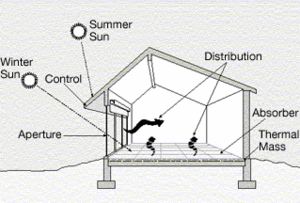
Fully adopting these technologies could lower projected U.S. energy use 17 percent to 20 percent by 2020
Energy efficiency technologies that exist today or that are likely to be developed in the near future could save considerable money as well as energy, says a new report from the National Research Council. Fully adopting these technologies could lower projected U.S. energy use 17 percent to 20 percent by 2020, and 25 percent to 31 percent by 2030.
Achieving full deployment of these efficiency technologies will depend in part on pressures driving adoption, such as high energy prices or public policies designed to increase energy efficiency. Nearly 70 percent of electricity consumption in the United States occurs in buildings. The energy savings from attaining full deployment of cost-effective, energy-efficient technologies in buildings alone could eliminate the need to add new electricity generation capacity through 2030, the report says. New power generation facilities would be needed only to address imbalances in regional energy supplies, replace obsolete facilities, or to introduce more environmentally friendly sources of electricity.
Many cost-effective efficiency investments in buildings are possible, the report says. For example, replacing appliances such as air conditioners, refrigerators, freezers, furnaces, and hot water heaters with more efficient models could reduce energy use by 30 percent. Opportunities for achieving substantial energy savings exist in the industrial and transportation sectors as well. For example, deployment of industrial energy efficiency technologies could reduce energy use in manufacturing 14 percent to 22 percent by 2020, relative to expected trends. Most of these savings would occur in the most energy-intensive industries, such as chemical manufacturing, petroleum refining, pulp and paper, iron and steel, and cement.
Related articles by Zemanta
- ORNL ‘deep retrofits’ can cut home energy bills in half (scienceblog.com)
- Energy efficiency, as powerful as it is unglamous, is getting its due (dailyfinance.com)








